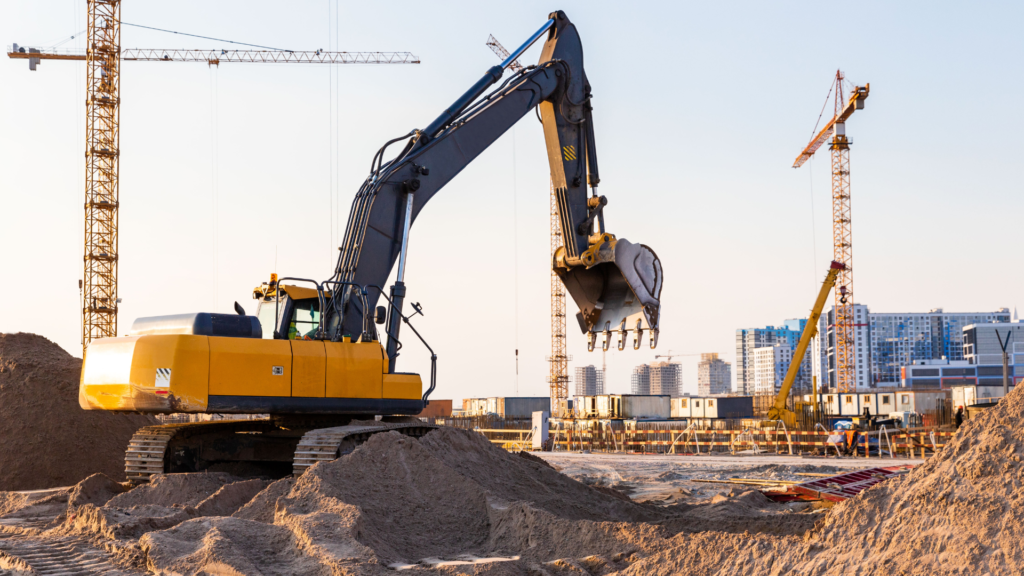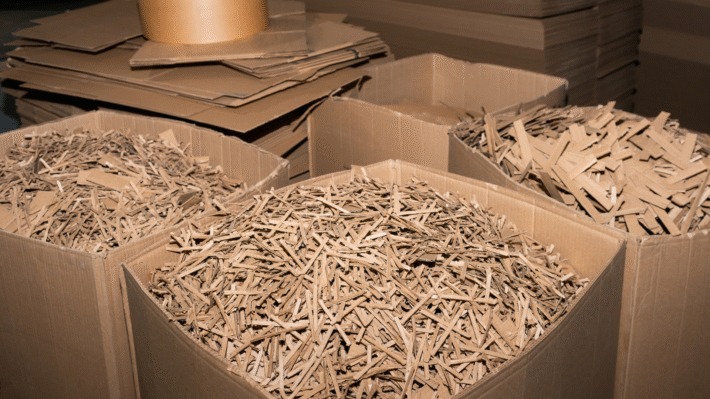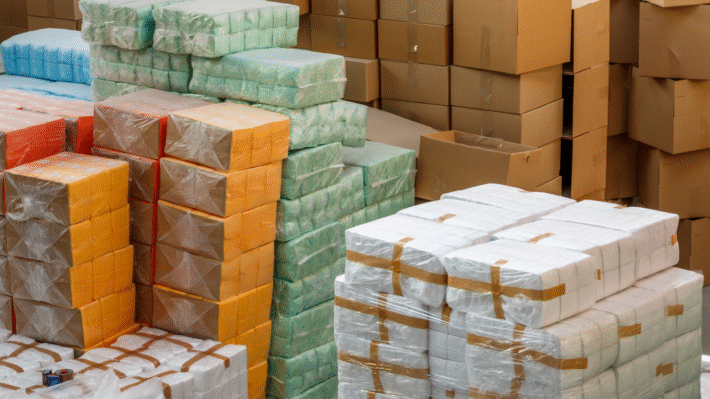Circularity in Mining and Excavation Equipment Supply Chain

Ladies and gents! Ever looked at that heap of obsolete mining and excavation machinery and wondered, “What a waste!”? Well, sit tight, because those concerns have finally met their match in the concept of creating circularity in mining and excavation machinery supply chains! We’re talking about turning the tides on the linear economy that’s been guzzling resources because here’s the scoop: we’re skilled in repurposing precious metals and components from obsolete equipment. Buckle up for a journey that sweeps from excavators to bulldozers, loaders to crushers. Get ready to conquer challenges involving diverse materials to technological obsolescence. We’ll delve into the craft of creating designs for durability, unravel the secrets behind advanced recycling technologies like component refurbishment, and zoom into the potential of innovative technology-driven strategies. The benefits of this thrilling ride? Cost savings, potential new revenue streams, and a gold star for environmental stewardship. Remember, it’s not just about scrapping—it’s about transforming.
Introduction to Circularity in Mining and Excavation Machinery
Mining and excavation machinery play an enormous role in our everyday lives. From extracting the precious minerals used in your cell phone to digging out the coal that lights up your home, they are indispensable. But with great use comes great wear and tear, leading to a lot of obsolete equipment. This gives rise to an interesting question, “What happens to these massive machineries when they’re past their prime?” Welcome folks, to the world of circularity—a trend that is sweeping through industries across the globe.
Understanding the Need for Circularity
Environmental Impact of Linear Economies
Linear economies, where we take resources, produce, use and then discard – has been the norm for far too long. This approach leads to tremendous waste. With mining and excavation machinery, it’s not only about the steel, aluminum, and copper that goes to waste. It’s also about the rare earth metals—those precious ninjas that do the heavy lifting inside your flashy gadgets. Recovering them not only saves resources but also reduces the environmental impact caused by mining for fresh materials.
Cost Implications of New Equipment
And it’s not just the environment that takes a hit. The wallet does too. Getting new equipment up and running is a pricey affair. It’s not just about buying the machine; it’s also about installing, operating, and maintaining it. By squeezing out every bit of value from existing machinery through repurposing and refurbishing, companies can save big bucks.
Basics of Circular Economy
Reduce, Reuse, Recycle
A circular economy is built on the ethos of reducing, reusing and recycling. It’s all about giving discarded equipment a second life. An old excavator might be of no use at a mining site, but its components could still be in tip-top shape. Maybe they can be used in another machine. Maybe they can be upcycled into a totally different product. At worst, they could be melted down to extract the metals. The underlying idea here is to minimize waste.
Closed-Loop Systems
At the heart of the circular economy lie closed-loop systems, a concept where discarded materials are fed back into the production process. These systems aim to squeeze out maximum value from resources, minimize waste, and extend the life cycle of products. In mining and excavation machinery supply chains, this can mean using outdated equipment as sources for spare parts, melting components to retrieve precious metals, or overhauling machines for resale.
Now, I am sure you are thinking that this all sounds peachy, but how do we actually make it happen? A fair question, and that’s exactly what we’re about to delve into in the coming sections.
So, stick around and strap in as we dive head-first into the nitty-gritty of creating circularity in mining and excavation machinery supply chains! You’ll be amazed at how these iron giants can be transformed into green champions.
Key Equipment and Materials in the Supply Chain
In the vast playground of mining and excavation, big toys rule the roost. And like any playground, the tools shape the game. Let’s take a look at the most critical gear on this ground.
Types of Equipment Involved
When it comes to breaking, digging, and shifting earth, we’re not talking about spades and buckets, folks. We’re talking about power. Iron muscle. Giants of the dirt.
Excavators and Bulldozers
On one side, we’ve got excavators. Rugged beasts with a biting arm that can tear into the ground like a hot knife through butter. They may look like lumbering giants, but don’t be fooled. These heavyweights have finesse, too.
Then, there’s the bulldozer. Name says it all, doesn’t it? Begging to push mounds, flatten the unruly, and carving paths where none existed. A moveable wall of metal might, this is the epitome of ground-breaking class.
Drills and Haul Trucks
But what about when things get hard? Tough as nails bedrock or stubborn mineral-rich deposits? We’ll need drills: the relentless, burrowing machines that dive into the depths, making Swiss cheese of the ground.
And after all that? Truckloads of earth and rock need to be carted away, and that’s where haul trucks come in. These beasts of burden carry the weight of the world (or at least several tons of it) away from the excavation site, clearing the way for the tools of destruction and creation.
Valuable Metals and Components
Let’s not forget the bounty in this big old playground, the reason why we get our hands dirty.
Steel, Aluminum, and Copper
The bones of our great machines, the steel is sturdy, flexible, recyclable. Aluminum, light as a feather and tough as nails. Copper, the veins carrying electricity, making it all happen. These metals are precious not only for their utility but for their potential after use.
Rare Earth Metals
Closer to the heart, rare earth metals. They’re like the seasoning, used sparingly but with a powerful kick. In magnets, batteries, even glass, they’re scattered across a variety of uses. They might be hard to find, but they’re worth their weight in gold.
Reclaiming these materials? That’s what circularity is all about. With a bit of thought and a lot of innovation, the playground can stay fun, bustling, and sustainable. Now isn’t that a game we’d all like to play?
Challenges in Achieving Circularity
Achieving circularity in the mining and excavation machinery supply chain is no small task. While it presents us with an eco-friendly and cost-effective solution, it also throws up some big challenges that we need to overcome.
Complexity of Diverse Materials
One major hurdle is the complexity and diversity of the materials that these machines are made from.
Technological Obsolescence
As technology advances, old models become obsolete. These obsolete models often contain a mix of materials that were the standard of their day but are now outdated. This technological obsolescence makes it trickier to repurpose the components of the machine. Separating these diverse materials is often tricky and this could slow down the recycling process.
Lack of Incentives
The second problem is the lack of incentives for companies to adopt circular practices. Let’s face it, going circular requires an upfront investment of time, effort, and resources. It often costs more to refurbish and recycle than to simply dispose of old equipment and buy new ones. Without the right incentives or a clear business case, many firms might find it hard to convince their shareholders to take the plunge.
Market and Economic Barriers
Alongside these issues, there are also several market and economic challenges to circularity.
Limited Market Demand
Now, the first of these is the limited market demand for recycled or refurbished machinery. In a world where the latest model is often seen as the greatest, fighting that perception is going to be an uphill battle. Convincing customers to choose ‘old but gold’ over ‘sparkling new’ is a challenge that needs to be addressed.
Economic Costs
And last but by no means least, there are the economic costs. The process of disassembling machinery, sorting and recycling materials, and then creating new products from these recycled materials isn’t cheap. It often involves significant manpower, complex logistics, and high-end technology – all of which come with a price tag. These higher costs can deter companies from choosing the circular route and sticking to their linear ways.
To summarize, achieving circularity in the mining and excavation machinery supply chain involves navigating a tricky terrain. But with smart strategies, technological advancements, and the right regulatory support, these obstacles can be overcome. In our journey towards a more sustainable and resource-efficient future, these challenges aren’t roadblocks, but stepping stones to innovation and progress.
Principles and Practices for Circular Supply Chains
Now, let’s venture into the extraordinary world of circular supply chains!
Design and Disassembly Strategies
Focusing on designing equipment that not only withstands the test of time but is also reusable is our first step. You got it right!
Design for Durability and Reusability
We’re talking about designing equipment that’s built to last! Unlike the common ‘use-toss-repeat’ strategy, we aim for the long run. We design machinery that can endure harsh mining conditions and live to see many more excavations. The best part? With occasional maintenance and refurbishment, they can have a much longer lifespan, saving costs, materials, and the environment!
Modular Design
Next up, we have modular design. This means we build machinery in separate parts or modules. Think of it like a gigantic Lego set! So, when a part is worn out, you simply swap it with a new one without having to replace the entire machine. Cool, huh? This reduces waste and makes our machinery more adaptable to different mining needs.
Advanced Recycling Technologies
Besides designing awesome and long-lasting equipment, we also have to deal with obsolete machinery. That’s where advanced recycling technologies step in.
Efficient Metal Recovery
Mining and excavation machinery consume a huge amount of metals. Instead of letting these precious resources go to waste when the machinery retires, we use sophisticated recycling methods to recover them. In this way, we ensure that metals like steel, aluminum, copper, and even rare earth metals are not lost but are reintroduced into the production cycle. This neat technique leads to significant resource and cost savings.
Component Refurbishment
Lastly, we don’t forget about the useful parts in our aged machinery. With skillful hands and eyes, we can refurbish many components, giving them a new life in a different machine, thus further stretching the value of every nut, bolt, and gear. It’s a win-win for everyone!
So, by combining durability, reusability, modular design, and advanced recycling technologies, we keep the wheels of the mining and excavation machinery supply chain rolling, all while minimizing waste and maximizing value!
Stay tuned, as there’s more to uncover in our pursuit of a perfect circular economy!
Strategies for a Circular Supply Chain
Creating a circular supply chain in the mining and excavation industry isn’t just about chucking old machinery into recycling. It’s about strategic planning, evaluation, and smart decision-making.
Evaluation and Disassembly of Obsolete Equipment
Making the most of outdated machinery starts with a keen eye and a sharp mind. Establishing definite and clear Criteria for Obsolescence is key. What makes a piece of equipment obsolete? Is it age, decreased functionality, or advancements in technology? Each piece of machinery in your fleet needs to be assessed based on these parameters. This helps to identify not just machines that are ready for the scrap heap, but those that still have life left in them.
Once these outmoded machines are identified, it’s time for the careful process of disassembly. Efficient, safe procedures are implemented, breaking down these giants of the construction world into manageable parts. The goal here is Efficient Sorting and Categorization. Metals like steel, aluminum, copper, and other materials are separated into respective categories, ready for the next phase in their lifecycle.
Repurposing and Upcycling Applications
This is the part where previously seen as ‘wasted’ or ‘useless’ suddenly transforms into ‘valuable’ and ‘beneficial’.
Firstly, the focus is on Direct Reuse and Creative Applications. Components that are still functional, or can be refurbished, are reused in other machinery. This not only cuts down on waste but also on costs. Old bulldozer’s engine still in top shape? Use it to revive that lagging excavator. It’s about making the most of what we already have. Some discarded parts can also be creatively upcycled, transformed into unique products or solutions, sparking innovation.
Another effective strategy put into action is Recycling into Raw Materials. Can’t reuse or repurpose a component? No problem. That’s where advanced recycling technologies step in. Various techniques, including hydrometallurgical and pyrometallurgical processes, are employed. Thus, old equipment gives way to an abundance of raw materials, ready to journey back into the manufacturing process.
This, my friends, is the magic of circular supply chains in the world of mining and excavation machinery. It’s not just about avoiding waste and dust-collecting scrap heaps. It’s about smart strategies, innovative thinking, and giving a new lease on life to discarded metal. And ultimately, it’s about caring for our planet in an industry that’s not typically associated with environmental friendliness. Now, isn’t that something worth digging into?
Technology and Innovation in Circular Economy
The birth of the circular economy has sparked a technology and innovation boom aimed at maximizing efficiency, reducing waste, and breathing new life into all equipment. It’s a thrilling game, but let me tell you, it’s not as complicated as you might think!
Advanced Recycling Processes
Let’s start here with advanced recuperation techniques.
Hydrometallurgical and Pyrometallurgical Methods
These are big words, I know! But put simply, these are just ways to extract valuable metals from old mining gear. With hydrometallurgical methods, we’re dipping hardware into powerful chemical solutions to pull out the good stuff.
On the other side, we have pyrometallurgical methods which involve high heat, smelting, and drama—think of melting down all that metallic junk to squeeze out the usable bits.
AI and Robotic Disassembly
Then there’s the cool part—robots. Yup! Artificial Intelligence and robotics are becoming the superstar employees in the world of equipment reclamation. Picture a robot arm skillfully disassembling an old machine, sorting goodies, and knowing just where to put everything. And the best part? They don’t ask for coffee breaks!
Digital Tools and Technologies
Alright navigators, time to chart a fresh course into a tech sea—capturing data, maximizing efficiency, and ensuring traceability in our circular economy journey!
IoT for Monitoring and Maintenance
Here, we got the magic of the Internet of Things or IoT. We can snap sensors all over machinery and have them chat with us about maintenance needs, efficiencies, and lifecycle updates. This way, we can catch problems early before they become equipment graveyards!
Using Blockchain for Traceability
Lastly, the secret recipe to trust and transparency—blockchain technology. This allows us to track and trace the lifecycle of every metal bit, every machine component, from cradle to reincarnation. It’s the digital notary public shouting, “This gear was repurposed responsibly!”
While this might sound like a sci-fi, let me assure you that it’s not. It’s a new chapter in the book of mining, excavation, and heavy machinery—and it’s a page-turner!
Economic and Regulatory Considerations
Ever considered the economic advantages of mining and excavation machinery circularity? Let’s talk about it.
Economic Benefits and New Revenue Streams
The circularity in mining and excavation machinery supply chain undoubtedly brings in significant economic benefits, forever altering how we perceive obsolete machinery.
Cost Savings and Enhanced Brand Value
Imagine this. You are chopping down the cost of acquiring new supplies by simply repurposing the already existing equipment. Reduction in spending, that’s what it brings.
An added bonus? It’s green, it’s sustainable, and it’s forward-thinking. It enhances your brand’s reputation, making you the go-to choice for environmentally conscious customers. Enhanced brand value — another win!
Competitiveness in the Market
Circularity practices don’t just save you bucks by reducing costs; they also place you in the market’s foreground. By repurposing old metals and components, you tap into a wealth of resources that your competitors might overlook. This unique competitive edge sets you apart from the rest.
Regulatory Compliance and Stakeholder Expectations
The beauty of circularity in mining and excavation machinery supply chain is not limited to its economic benefits. Its real charm lies in the regulatory compliance and the fulfillment of stakeholder expectations it brings along.
Incentives and Policies
Various regulatory bodies offer a suite of incentives to companies that adopt ecological and sustainable practices. Embracing the principle of circularity, you could tap into these incentives, which multiply your savings even more. The policies in place favor the circular economy, and by adhering to them, you receive not just economic benefits, but also a pat on the back from the regulatory bodies.
Market Development Strategies
The market today leans towards sustainable and eco-friendly practices. People now are proactive in safeguarding the environment. By incorporating circularity into your supply chain, you’re riding with the current market trend, setting the pace for market development strategies focused on sustainability.
In summary, adopting circularity in mining and excavation machinery supply chain confers massive economic benefits and aligns with regulatory standards. Plus, remember that sense of doing something good for our planet? Priceless!
Remember one key point, though. Embracing circularity is not just about adhering to rules or saving money; it’s about bringing meaningful changes in our quest for sustainable living.
Implementing Circular Practices
Let’s cut straight to the chase, implementing circular practices in the mining and excavation machinery supply chain isn’t a walk in the park. But with strategic planning and collaborative efforts, we can make a substantial difference. Let’s explore the key steps for this implementation:
Steps for Implementation
Pilot Projects and Scaling Up
Start small but think big! Kick-off pilot projects to test the waters of circularity. This allows you to tweak and refine the process before going all out. Analyze, adapt, and adjust. Repeat the cycle until you achieve optimal efficiency. Once well-established, scale up the operations. Expanding too quickly can create hiccups so be patient and deliberate during this expanding process.
Standardized Processes and Reverse Logistics
Now, pay close attention to this. The circular model is highly dependent on well-coordinated processes. This includes maintenance, return policies, and the treatment of obsolete equipment. Paving the way for reverse logistics is a must to ensure that waste returns safely to the production cycle. A simple rule of thumb? Create a clear protocol, enforce strict standards and ensure everyone follows them.
Collaboration and Partnerships
When the going gets tough, the tough get going. In this journey of bringing circularity in mining and excavation machinery, you’re not alone. There are numerous stakeholders who have embraced the circular economy.
Collaborating with OEMs and Specialists
First off, working hand-in-hand with original equipment manufacturers (OEMs) and recycling specialists proves to be super beneficial. OEMs can guide design changes to make the equipment more amenable to recycling or reuse while the recycling specialists can shed light on efficient recovery techniques.
Cross-Industry Alliances
Don’t be surprised, even your competitors can be your greatest allies. Engaging in cross-industry alliances helps in sharing best practices, resources, and even collaborative problem-solving. Remember, the end goal is common for all – A sustainable future!
As simple as it might sound, the transition into circularity requires significant effort. But trust me, it’ll be worth it. After all, a profitable business operation that is also beneficial to our environment – sounds like a dream come true, right? You bet it is!
The Future of Circular Supply Chains
As we peer into the horizon of the mining and excavation industry, it’s clear: the future is circular. We’re not talking about round gears or rotating drills. We’re talking about the supply chain itself. That cycle of production and disposal that keeps our industry moving. But what if we could give that chain a twist? What if we change the endpoints of that chain into a continuous loop? Now, that’s an exciting future. Let’s delve into what that could look like.
Emerging Circular Business Models
Equipment-as-a-Service
In the world of tomorrow, anyone could become a dynamic participant in the circular supply chain through the concept of Equipment-as-a-Service (EaaS). This model is a game-changer, folks. Instead of buying and owning equipment outright – and dealing with its disposal when it becomes obsolete – companies could lease or rent it. A vendor provides maintenance, repairs, and eventual dismantling or upgrading of that equipment.
What does this mean for the circularity? A whole lot. Vendors have an incentive to design and build long-lasting, durable equipment that can be easily upgraded or repaired. Minerals are reclaimed, resources are saved, and companies are freed from the cost and hassle of obsolete equipment disposal. Isn’t that brilliant?
Closed-Loop Systems
These EaaS models could easily merge into fully closed-loop systems. Here’s how it works. In a closed-loop system, waste isn’t an issue. The end-of-life material from equipment is looped back into the production cycle, ready to be reincarnated as brand new equipment components. Just imagine: our mining and excavation machinery living a thousand lives, constantly renewed. Endless and yet scarce resources, like rare earth metals, kept within this closed loop, thereby minimizing environmental harm and resource depletion. Isn’t that the future we want to build?
Innovative Technologies and Sustainable Practices
Nanotechnology and Self-Healing Materials
Some may say it’s science fiction. But think about it: Nanotechnology and self-healing materials entering our industry isn’t a far-fetched idea. With nanotech, we could create machinery parts on an incredibly small scale, reducing material needs. What about self-healing materials? Imagine physical damage to the metal casings of equipment healing like a human skin wound. Talk about more extended equipment lifespan!
Zero-Waste Initiatives
Lastly, zero-waste initiatives could transform our industry’s future. A zero-waste extraction site or a zero-waste factory might sound like a dream right now, but with the right circular strategies and innovative technologies, it could become our industry’s standard. And that’s a future worth digging for!
In conclusion, circular supply chains aren’t just a “nice to have” thing. They are the future; a sustainable, efficient, and profitable future for the mining and excavation machinery industry. So, why not take that first step towards it?



